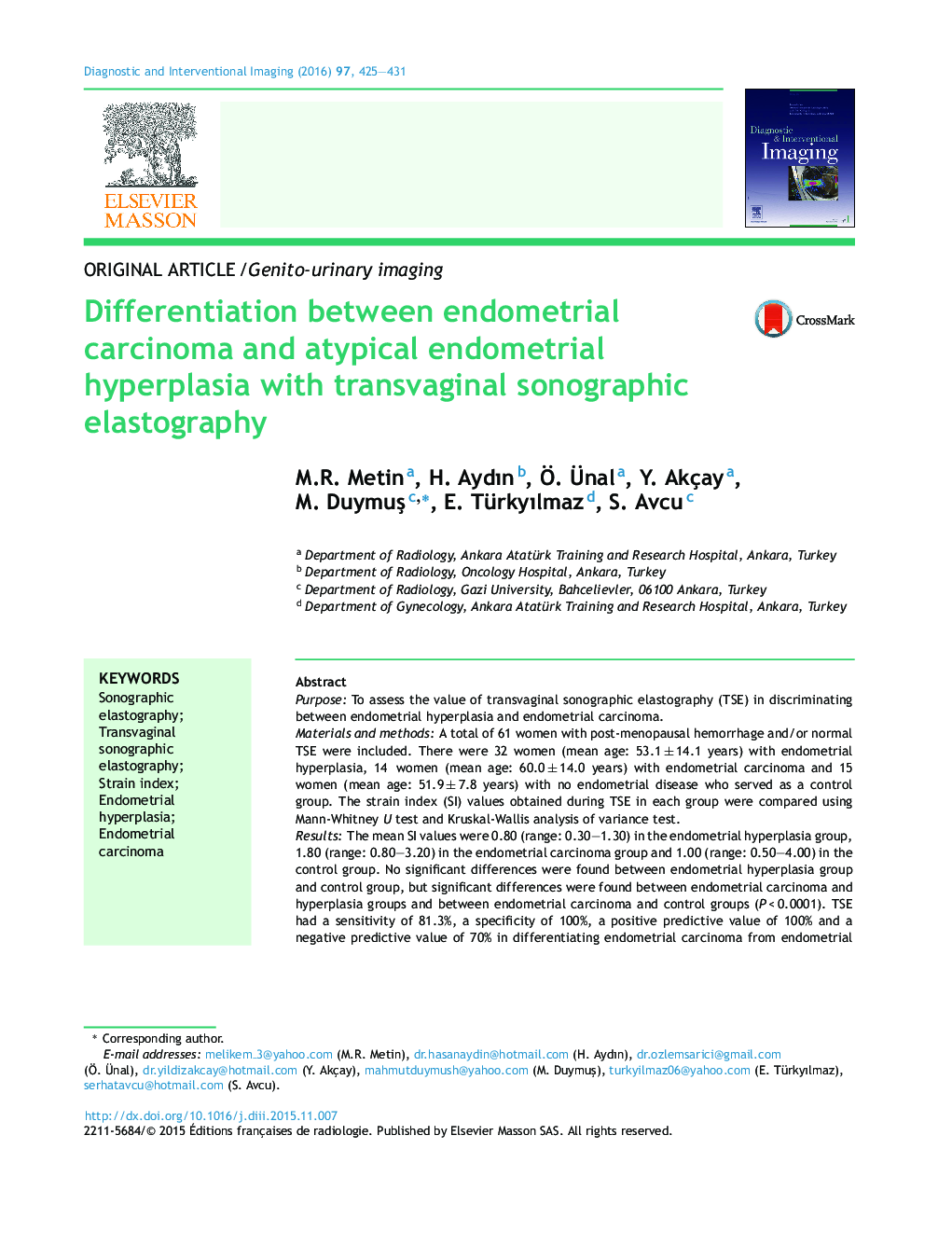| Article ID | Journal | Published Year | Pages | File Type |
|---|---|---|---|---|
| 5880363 | Diagnostic and Interventional Imaging | 2016 | 7 Pages |
PurposeTo assess the value of transvaginal sonographic elastography (TSE) in discriminating between endometrial hyperplasia and endometrial carcinoma.Materials and methodsA total of 61 women with post-menopausal hemorrhage and/or normal TSE were included. There were 32 women (mean age: 53.1 ± 14.1 years) with endometrial hyperplasia, 14 women (mean age: 60.0 ± 14.0 years) with endometrial carcinoma and 15 women (mean age: 51.9 ± 7.8 years) with no endometrial disease who served as a control group. The strain index (SI) values obtained during TSE in each group were compared using Mann-Whitney U test and Kruskal-Wallis analysis of variance test.ResultsThe mean SI values were 0.80 (range: 0.30-1.30) in the endometrial hyperplasia group, 1.80 (range: 0.80-3.20) in the endometrial carcinoma group and 1.00 (range: 0.50-4.00) in the control group. No significant differences were found between endometrial hyperplasia group and control group, but significant differences were found between endometrial carcinoma and hyperplasia groups and between endometrial carcinoma and control groups (P < 0.0001). TSE had a sensitivity of 81.3%, a specificity of 100%, a positive predictive value of 100% and a negative predictive value of 70% in differentiating endometrial carcinoma from endometrial hyperplasia. The area under ROC curve (AUC) to distinguish between endometrial carcinoma and endometrial hyperplasia was 0.933 (95% CI, 0.853-1.000) using a threshold SI value of 1.05. The AUC to distinguish between endometrial carcinoma and control was 0.881 (95% CI, 0.735-1.000) using a threshold SI value of 1.15.ConclusionOur results indicate that TSE can provide important information that help discriminate between endometrial carcinoma and endometrial hyperplasia.
